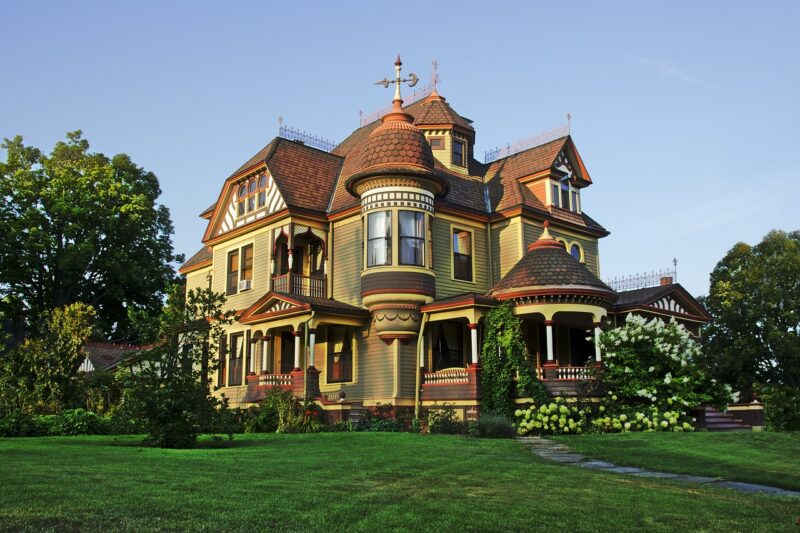
The Victorian era, known for its strict social norms, elaborate fashions, and rapid industrial advancements, also produced some incredibly dangerous household items. One of the most notorious among these was wallpaper. Yes, you read that correctly. The very wallpaper that adorned the walls of fashionable Victorian homes posed a real threat to the health of its inhabitants. In this article, we will explore the chilling history of these deadly wallpapers, the science behind their toxicity, and the unfortunate consequences that befell many unsuspecting homeowners.
1. Aesthetic Appeal: The Allure of Victorian Wallpaper
During the Victorian era (1837-1901), wallpaper became a popular alternative to costly decorative plaster or paint. With advances in printing technology, manufacturers churned out vibrant patterns and designs that reflected the taste of the times. Bold, floral motifs, paisleys, and intricate patterns were particularly in vogue, and their appeal transformed many homes into luxurious abodes.
However, little did homeowners know that these aesthetic enhancements often came at a dire cost.
2. The Ingredients: The Toxicity of Dyes
The wallpaper that filled Victorian homes often contained a variety of dyes, some of which were derived from toxic substances like arsenic. Arsenic was used primarily because it produced vibrant green hues that became immensely popular during the period. This shade eventually earned the nickname “Emerald Green.” Although its name sounded appealing, its properties were anything but.
Arsenic was not only a potent poison, but it could also vaporize under certain conditions, releasing poisonous fumes into the air. With sensitive residents, especially children, inhaling these vapors could result in severe health issues.
3. Cases of Poisoning: Tales from the Past
The dangers of arsenical wallpaper were well documented as unfortunate stories began to surface. Reports of illness and even death attributed to prolonged exposure to the toxic wallpaper became increasingly common. One particularly striking account came from a family who redecorated their entire home with “Emerald Green” wallpaper. Over time, various family members fell ill, suffering from severe respiratory issues, skin irritations, and other unexplained ailments. Some succumbed to these mysterious illnesses, and upon investigation, the wallpaper was found to be the culprit.
Another distressing account involved a school in England that decorated its classrooms with brightly colored wallpapers, including those with toxic dyes. A spate of illnesses among schoolchildren led to a thorough investigation, which ultimately concluded that the wallpaper was responsible for the health crisis. The school was forced to remove the wallpaper and replace it with safer alternatives.
4. Health Consequences: Symptoms of Arsenic Poisoning
Those exposed to arsenic through wallpaper could experience various symptoms including:
- Skin Lesions: Arsenic exposure is known to cause rashes and other skin-related issues.
- Respiratory Issues: Chronic coughing, shortness of breath, and wheezing were reported as common symptoms among affected individuals.
- Neurological Problems: Long-term exposure could lead to peripheral neuropathy, characterized by pain, tingling, or numbness in the extremities.
- Gastrointestinal Distress: Symptoms included vomiting, diarrhea, and abdominal pain as the body tried to cope with the poison.
The symptoms varied in severity depending on the duration and extent of exposure, but alarmingly, some of these individuals had no prior knowledge that their home decor was poisoning them.
5. The Shift Towards Safety: Changing Regulations
As the link between toxic wallpaper and health issues became undeniable, public outcry grew. The late 19th century saw increased scrutiny and regulatory measures concerning the manufacturing of household goods. The introduction of stricter standards led to a decline in the use of toxic dyes, and manufacturers began to explore safer alternatives. By the turn of the 20th century, laws were established to limit or ban the use of harmful substances like arsenic in consumer products.
This shift not only saved lives but also paved the way for the production of safer and more environmentally friendly materials in the home decor industry.
6. Lessons for Modern Decor: Awareness and Safety
Today, we might look back at the Victorian-era obsession with colorful wallpaper with a sense of nostalgia. However, it’s vital to remember the lessons learned from that era. In today’s world, homeowners should be vigilant about the materials used in home decor and the potential hazards they may carry. When shopping for wallpaper or paint, consider the following:
- Research Brands: Seek out manufacturers that prioritize safety and transparency about their product ingredients.
- Look for Certifications: Products that comply with safety certifications (e.g., low-VOC, non-toxic certifications) can provide peace of mind.
- Consult Experts: Interior designers and home health experts can help you make informed decisions about your decor choices.
By being proactive in our choices today, we can avoid the fate of our Victorian ancestors and create beautiful, safe living spaces for ourselves and our families.
Conclusion
The tale of Victorian-era wallpaper serves as a cautionary story about how fashion can sometimes overshadow safety. As we admire the beauty of this historical period, it’s essential to remember the real-life consequences of those deadly designs. Understanding the origins of our home decor materials can guide us toward making safer choices, ensuring that our homes remain spaces of comfort and health—instead of one filled with hidden dangers from the past. In celebrating the aesthetic achievements of the Victorian age, let’s not forget the importance of safety in our decor lives today.







